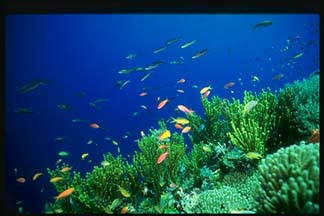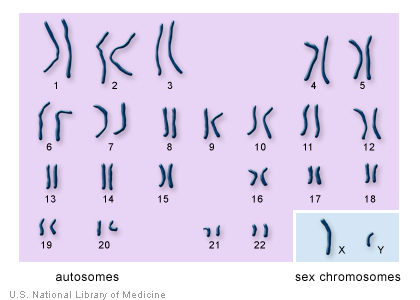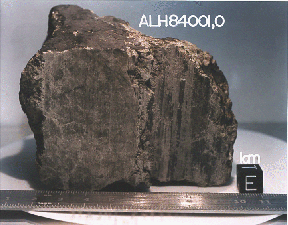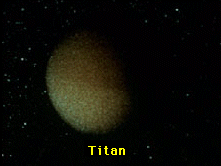Click on image for full size
Courtesy of National Center for Biotechnology Information, NIH
How New Cells Are Made: Mitosis
An animal, plant, or other multicellular organism needs to make more cells in order to grow larger. One cell divides into two during growth. Unicellular organisms, like protists, which have only one cell, often reproduce by splitting their one cell into two or more. The process by which the genetic material within the cell nucleus (chromosomes) divides is called mitosis.
Human cells each have 46 chromosomes and when they divide each of the two new cells has 46 chromosomes. Where do the additional chromosomes come from? The genetic material is duplicated so that the same number of chromosomes is in the next generation of cells. After chromosomes are duplicated, dividing them up is a four-step process.
Step 1: Prophase
During this step the cell gets ready for mitosis. Duplicated chromosomes are held together. By the end of prophase they have changed from thin threads into thick rods. Fibers made of protein begin to form that will eventually help pull the pairs of chromosomes apart.
Step 2: Metaphase
The membrane around the nucleus brakes apart and the chromosomes line up at the middle of the cell. The fibers that started to develop during prophase have become stronger and attach at both ends of the cell as well as to each chromosome. If the cell were a globe, the fibers would be attached at the north and south poles while the chromosomes would be lined up along the equator.
Step 3: Anaphase
During this step, the action really happens! Those thick fibers attached to the two “poles” of the cell pull the duplicated chromosomes apart into two groups.
Step 4: Telophase
A nucleus membrane forms around both groups of chromosomes and the rest of the cell begins to divide. With the same genetic material, these two cells are just like the one they were made from!















